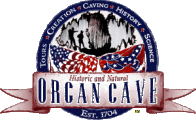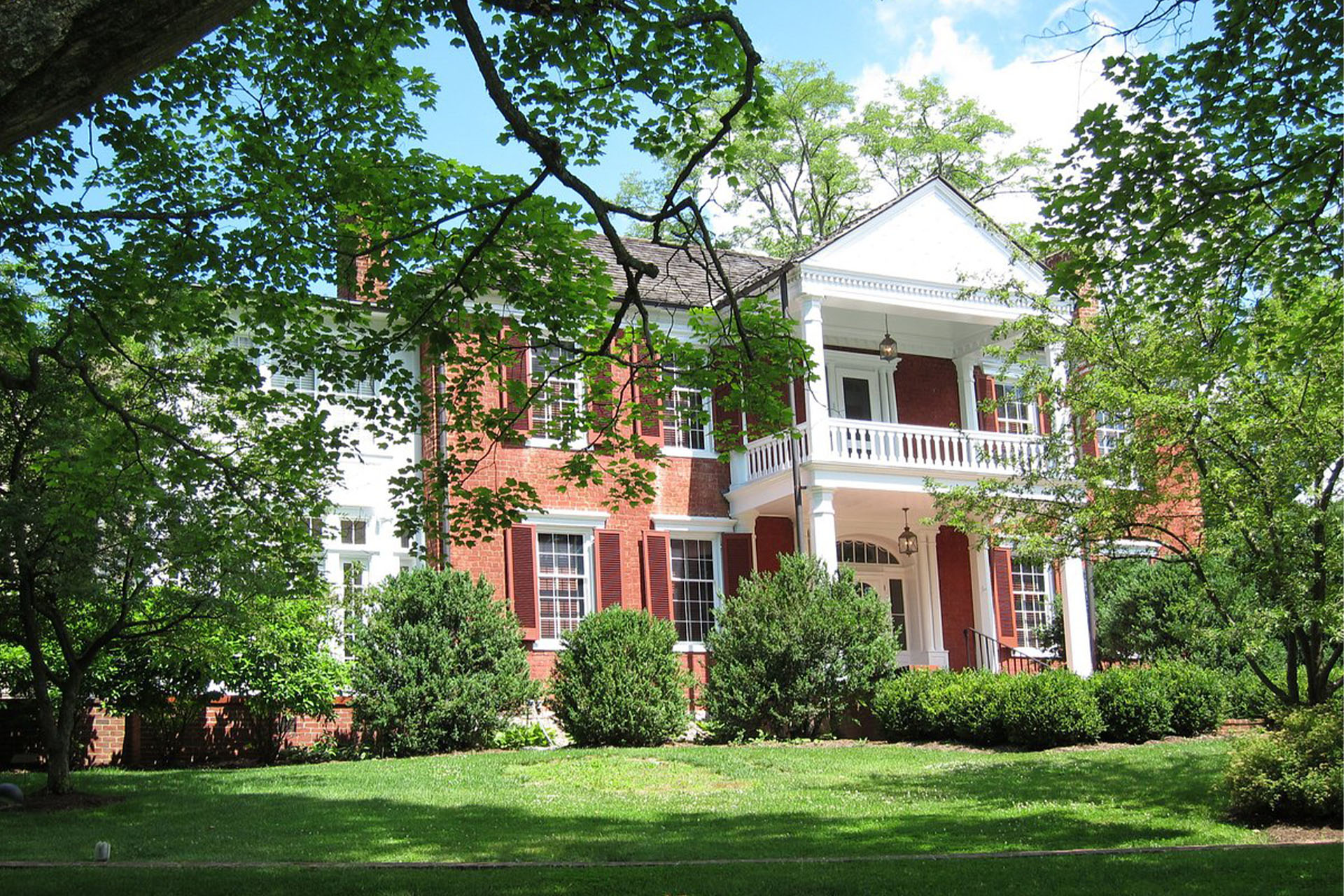Has anyone ever heard of Organ Cave, WV and its role in the Civil War? I was watching television a week or so ago and they had a big segment about it during Cities of the Underworld. Apparently it was used to make gun powder by Lee's army and they said that the Federal Army was camped literally right on top of it and had no clue that it was there. Any input?
Announcement
Collapse
No announcement yet.
Organ Cave, WV
Collapse
X
-
-
Re: Organ Cave, WV
for everyones reference
 Organ Cave is a national natural landmark & historic land mark of historic places with fossil hunts, expeditions,& walking tours
Organ Cave is a national natural landmark & historic land mark of historic places with fossil hunts, expeditions,& walking tours
Organ Cave is located near Ronceverte, WV in Greenbrier County, WV. It's an area of WV that did not want to leave VA and was dragged out by a few delegates to the Wheeling Convention. Arguably it the most "southern" culturally of WV counties. The saltpeter mines in the area supplied the US military from the time of at least the war of 1812. It's an interesting story, but it was a known mining area, I don't know how the federal army could not know anything about it. Still an interesting site to visit.
Jared
West Virginia University AlumniLast edited by jarednichols; 03-22-2010, 02:28 PM.Jared Nichols
Liberty Rifles
- The French Mess
-
Re: Organ Cave, WV
When in Greenbrier County, visit Organ Cave, most of the hoppers for leeching saltpeter are still there, the cave is easy to find, it has been a tourist attraction for many years. And be sure to visit the Greenbrier Historical Society's museum in Lewisburg.
 Explore the Greenbrier Historical Society museum, archives, tours, and events in Lewisburg, WV — preserving and sharing the rich history of the Greenbrier Valley.
Explore the Greenbrier Historical Society museum, archives, tours, and events in Lewisburg, WV — preserving and sharing the rich history of the Greenbrier Valley.
There is a great deal of history to Greenbrier County, with early settlement dating back to the 1740s. There are areas to visit pertaining to the French and Indian War through the Civil War. I have not been to the museum in many years but there used to be a number of interesting items there, including Traveller's first saddle (Traveller was from Greenbrier County) and one of the saltpeter hoppers from Organ Cave. There is also a fully and accurately restored Conestoga wagon, a very rare item that served the Lewisburg area for many years, bring trade items from Baltimore. Lewisburg itself is a beautiful town and has well preserved homes dating from the early days of settlement and they are well marked. And you can ask for directions to the Confederate mass grave where the unclaimed bodies of the Confederate soldiers killed in the Battle of Lewisburg fought on May 23, 1862 are buried. I guess I should say that my family has been in Greenbrier County since 1830..... :)Thomas Pare Hern
Co. A, 4th Virginia
Stonewall Brigade
Comment
-
Re: Organ Cave, WV
Aaron...
Once upon a time, back before I used to dress up funny in wool and get dirty on battlefields, I used to dress up funny in coveralls and get dirty underground. Back in the '70s -- I was just in my early 20s at the time -- several guys in my "grotto" (the caving equivalent of a unit) did a week-long trip through W.Va hitting every cave we could. I think we did about 10 caves in six days if memory serves. One of the caves we did was Organ Cave.
I don't remember what the reason was, but the cave was closed to the public at the time (maybe it was the off-season or something). However, the cave is huge -- at least 45 interconnected MILES of underground tunnels and passageways -- and only a tiny portion, much less than one mile, is open commercially for tours. The rest is "wild." They now offer adventure tours of the easier parts of the cave where you have to use helmets and such, but they didn't do that then. We entered the cave at one of its many other wild entrances about four or five miles away from the main commercial entrance and made our way toward the main entrance. Permission to enter the cave depends on where you go in, and who owns the land that entrance is on -- we had permission from both the landowner at the entrance we used, as well as the official Organ Cave people to exit the cave via the main entrance. After four or five miles (and about eight hours) underground, we came closer to the to the main entrance where the old saltpeter vats (hoppers) from the 19th century are located. They're oak (white oak, probably) and in just about the same shape as they were back then. What they did was to dig cave dirt and fill the vats. Then they'd dump water on top of the dirt. The water would dissolve the saltpeter, run out the bottom of the vat, and they'd then pump the water out of the cave via a pipe network of hollowed oak logs. Outside the cave they boiled the water and got the saltpeter out.
The photo here is me leaning on one of the vats in the non-tourist area. It's an old photo, and didn't scan very well. You can see one of the hollow-oak pipes in the lower left of the photo.
I haven't gone caving in years. Still have all my gear, but my knees just won't take hours of crawling on solid rock these days. Plus, I don't fit quite so well in some of the tighter crawlspaces anymore. :)

A.J.A.J. Hamler
Comment
-
Re: Organ Cave, WV
Well, being a caver, a reenactor, and former curator of a not-for profit tour cave, this is a subject close to my heart.
First and foremost, like all for-profit commercial tour caves, the so-called "information" you will find on the Organ Cave is some truth, and some hooey, all mixed together into an info-tainment stew. I'm sure the cave's present owners fed that stuff about the Union Army's blissful ignorance of the cave and its "petre" works to the "Cities of the Underworld" folks. However, they were too busy preparing to defend Lewisburg from the Confederates at the time to worry much about the cave. To add insult to injury, if you go to the cave, they will also tell you that the type of the ice age giant sloth, Megalonyx jeffersoni, was supposedly found there. In truth it was not; it was found in a nearby cave in Greenbrier County, but not in Organ Cave.
Now, that's not to say that Organ Cave wasn't a significant source of saltpetre for the Confederate Nitre Bureau; it was. The vats shown in A. J. Hamler's post are surely there, and there are quite a few of them. It's really amazing how well preserved they are. As A. J. said, the cave is also one of the longest caves in WV, ranks among the long caves of the world. It's really quite remarkable. His synopsis of the saltpetre-making process is accurate.
Generally, the saltpetre mines were worked by a small crew of men and boys, however slaves were used in some of the larger ones as well. The works were reasonably discrete however, and without local informants could be easily overlooked, especially during an active campaign. One of the most significant works was at Trout Rock Cave, a few miles south of Franklin, in Pendleton County WV. The works there were found and destroyed by the Union Army. Nevertheless, many of the cave petre works were never found, and they continued to send their product, pure white, crystalline saltpetre, to the Confederate Powder Mill in Augusta, Georgia until the end of the War. The operation there was the brainchild of Colonel G. W. Rains, a brilliant chemical process engineer. The Augusta Mill was so efficient, that one Confederate soldier commented, "..if we could have eaten our rounds, we would have never gone hungry, for it seemed we were never without ammunition". Ironically, the Augusta Mill was never found by Sherman's Troops, even though the March to the Sea brought them within striking distance of what was arguably one of the most strategic targets within the Confederacy. And the mill was not discreet; it was a major industrial operation that employed hundreds.
One final note on the petre caves. The DuPont fortune was founded, literally, on cave saltpetre. DuPont had heard that there were caves where saltpetre was being produced from the soil within them, and he personally made a round of the "saltpetre circuit" and visited many of these caves for himself. During his visits he made exclusive deals with the cave owners which sent all the petre they could make to the Wilmington Powder Mill that DuPont was building. As saltpetre was the most difficult ingredient of gunpowder to acquire (charcoal and sulfur are easy in comparison), the deals DuPont made allowed him to acquire a ready supply of very pure saltpetre, at a very reasonable price. Remember, until this time, most of the saltpetre used for powder was derived from scraping soil from privies, from beneath chicken houses, and any other place where nitrates built up from organic sources. It was smelly, nasty, labor intensive work, and it didn't produce a steady supply. The cave petre was easy to make, by comparison, and could produce lots of it in a short amount of time.
FYI,
Bob D."If you have selfish, ignorant citizens, you're gonna get selfish, ignorant leaders."
George Carlin
Comment


Comment